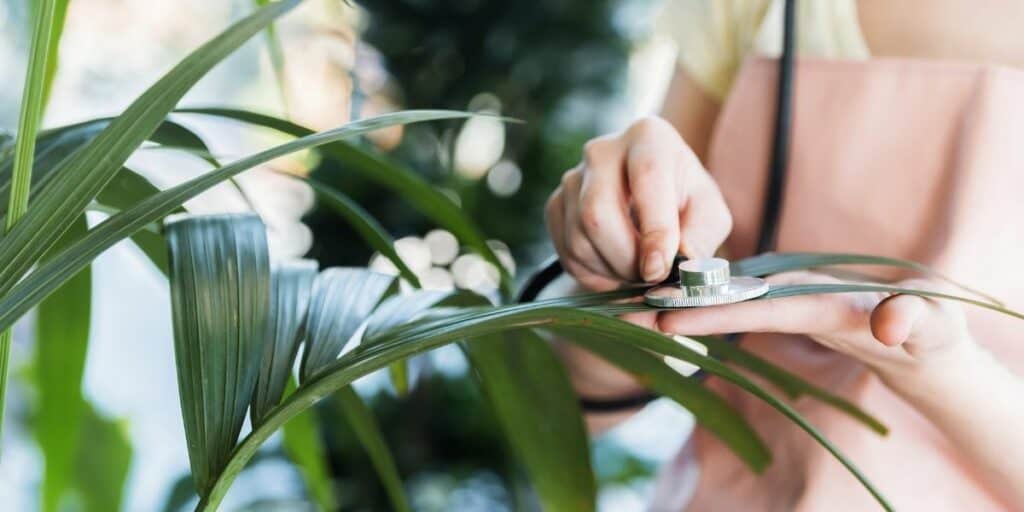
Plant disease is a dreaded reality for every houseplant owner or gardener. Some of these appear to pop up out of nowhere, seemingly manifesting overnight.
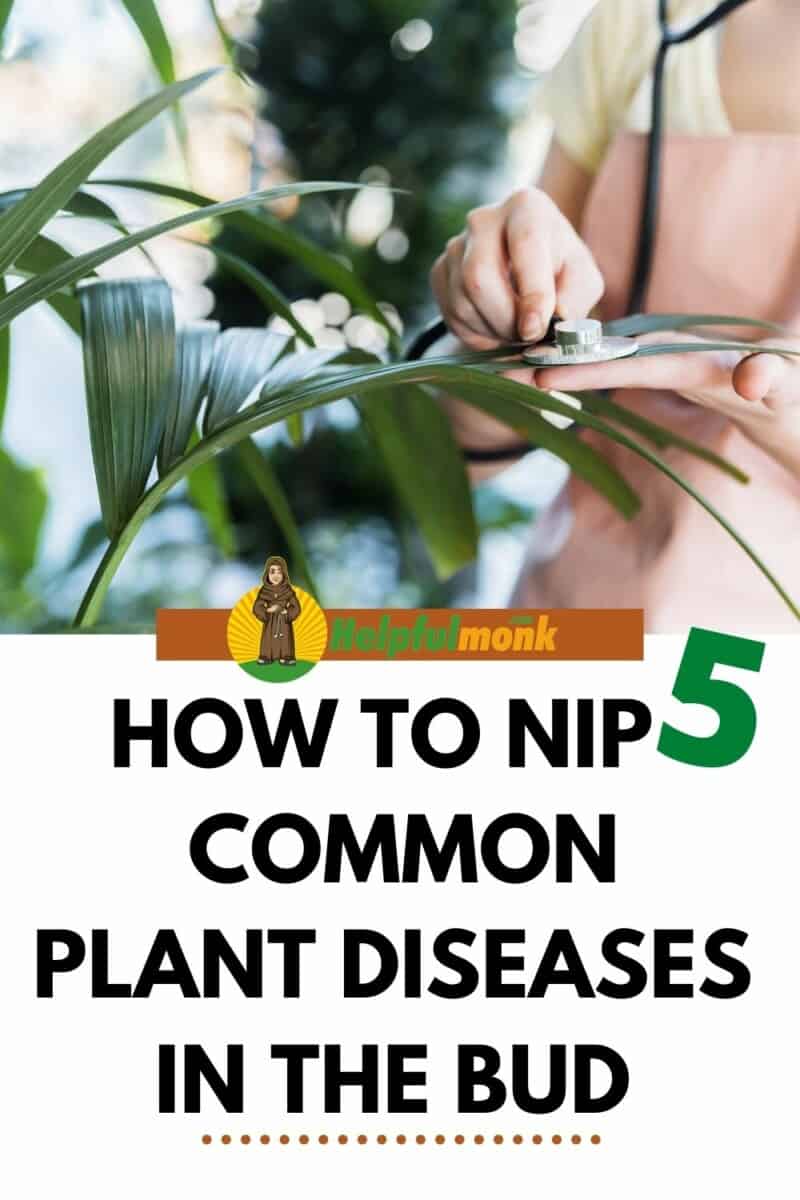
Fortunately, no matter how it may look, all diseases have a specific cause, and many of them can be treated.
Even more important is to prevent the diseases in the first place.
Know what signs to look for and then when you do see issues you can look for a quick fix or a helpful hack or trick to prevent it from killing your favorite house plant.
Learn how to nip 5 common plant diseases in the bud, below!
Root rot is an insidious disease that does unseen damage under the soil. Because of this, it won’t become apparent until the disease has progressed to the point where the leaves have begun to wilt.
If you suspect a plant may have root rot, gently remove it from the soil and examine its roots. The signs will be clear: mushy roots, turning brown or black. Healthy roots are always firm, and they’re usually light in color.
Root Rot is caused by Phytophthora, a fungus that is unusual in that it attacks the roots rather than the crown and leaves of a plant. Phytophthora fungus thrives in a wet environment, so it is often a result of over-watering or soil that does not drain properly.
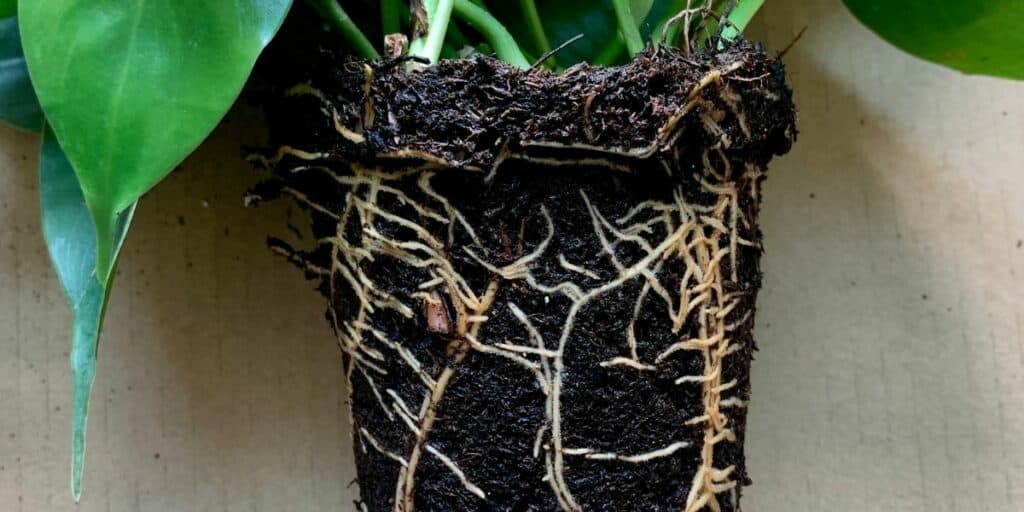
Sadly, root rot is hard to treat and can often be fatal. You can try to salvage the plant by removing the mushy, diseased roots and leaving the healthy roots behind.
Apply a fungicide, ideally containing the ingredient thiophanate-methyl (or benzimidazole-based ingredients in general). Finally, repot the plant in fresh soil in a new, uninfected container.
When it comes to Root Rot, prevention is more important than ever! This is a nasty disease, and when it takes, it’s notoriously hard to get rid of. To prevent it, the first thing you will want to do is take extra care when you water.
Try not to water too frequently, and make sure that the soil drains fully. The roots should never be allowed to soak.
White mold, as its name implies, manifests itself in fuzzy white spots on leaves and fruit. These gradually spread, and the mold can come to coat afflicted plants, in severe cases. While White Mold is unsightly, it is seldom deadly.
White mold is caused by a fungus called Sclerotinia sclerotiorum. Like many molds, this fungus thrives in damp conditions. It also prefers it to be cool. For this reason, overwatered plants and plants kept in the shade are the most likely to be afflicted by White Mold. Weeds can also serve as hosts.
Fortunately, White Mold is one of the easier molds to get rid of! All that you need is a fungicide, Neem oil, or a homemade mold-repellent spray. The latter can be made with a combination of baking soda, dish soap, and water. A spray-down with milk and then water may also do the trick.
To prevent White Mold, you’ll want to make sure that the soil never gets too wet. Water only when necessary (allowing the soil to dry almost fully in-between).
Additionally, try to water the soil directly, to avoid getting the leaves wet (damp leaves serve as prime White Mold territory). For garden plants, make sure that no weeds are allowed to grow too near.
Although Powdery Mildew is white like White Mold, the similarities stop there. Unlike White Mold, white appears in the form of fuzzy spots, Powdery Mildew looks like nothing so much as a fine dusting of powdered sugar.
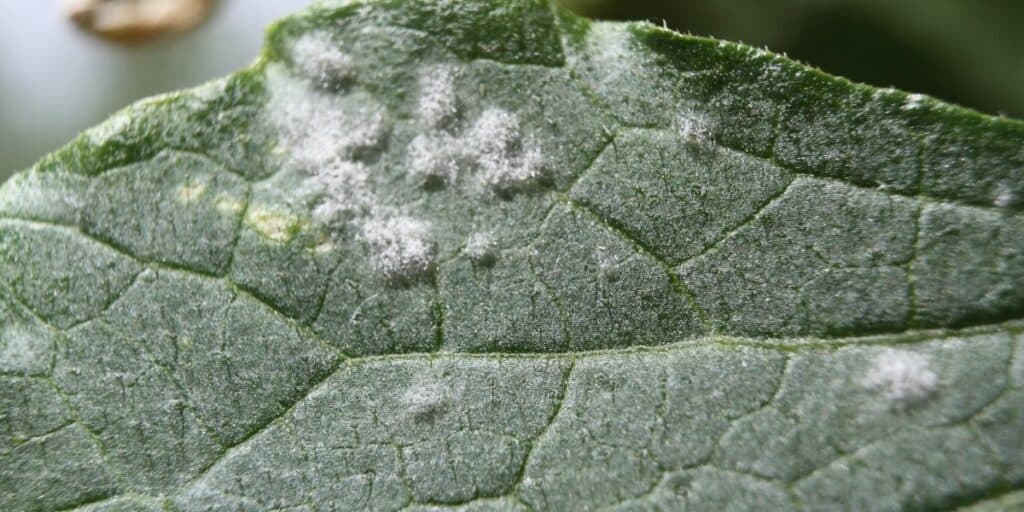
If the Powdery Mildew becomes severe and overtakes too much of the plant, it may also cause the fruit to ripen prematurely (so that it will often rot).
Powdery Mildew is caused by a fungus called Podosphaera xanthii, and it’s unique in that it likes conditions that are warm and dry. It also prefers poor airflow and little sunlight.
Fungicide is the best way to nip Powdery Mildew in the bud. Those containing lime-sulfur tend to work best. Some more natural options are Neem oil or a homemade concoction of roughly 1 tsp baking soda to 1 quart of water.
The keys to preventing Powdery Mildew are ample airflow and plenty of sunlight. Space your houseplants plants appropriately and be vigilant about pulling weeds in your garden.
Rust is so-named for its rust-like appearance, appearing in small orange-brown bumps on plant stems. If left untreated, these bumps will get larger. Eventually, they’ll open up and release spores, spreading the disease through both wind and water.
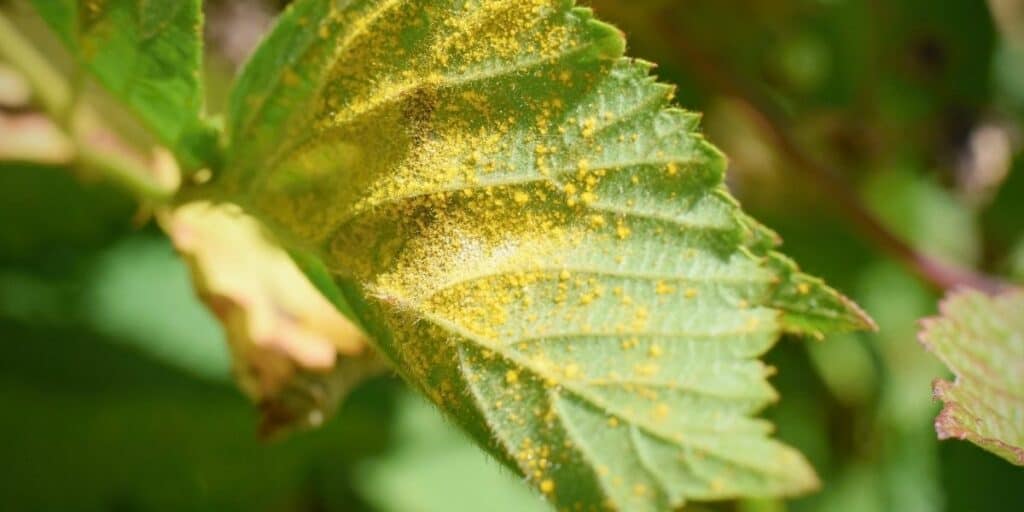
Like many plant diseases, Rust in plants is caused by a parasitic fungus family by the name of Pucciniales. It enjoys mild to moderate temperatures, and damp conditions. This means that overwatering is one of the primary causes. Additionally, overhead watering can invite Plant Rust, as it gets the leaves and stems unnecessarily wet.
Plant rust can be battled with either fungicide or Neem oil. You can also try sprinkling afflicted plants with sulfur. Finally, some recommend spraying your plants with a combination of baking soda and water.
You will also want to remove any infected bits of the plants and dispose of them appropriately (by burning or trashing them; never compost).
To prevent plant rust, make sure that your plants have sufficient airflow. Space potted plants out from each other, and clear out the weeds in your garden. You will also need to take care not to overwater. Finally, avoid overhead watering, so that your plant leaves don’t get wet, and make sure that the soil is well-draining, so the roots aren’t allowed to soak!
Sooty Mold looks exactly like its namesake, coating plants in a fine, black layer of mold resembling soot. The mold itself isn’t particularly harmful, but it can hurt plants indirectly by blocking out the sunlight.
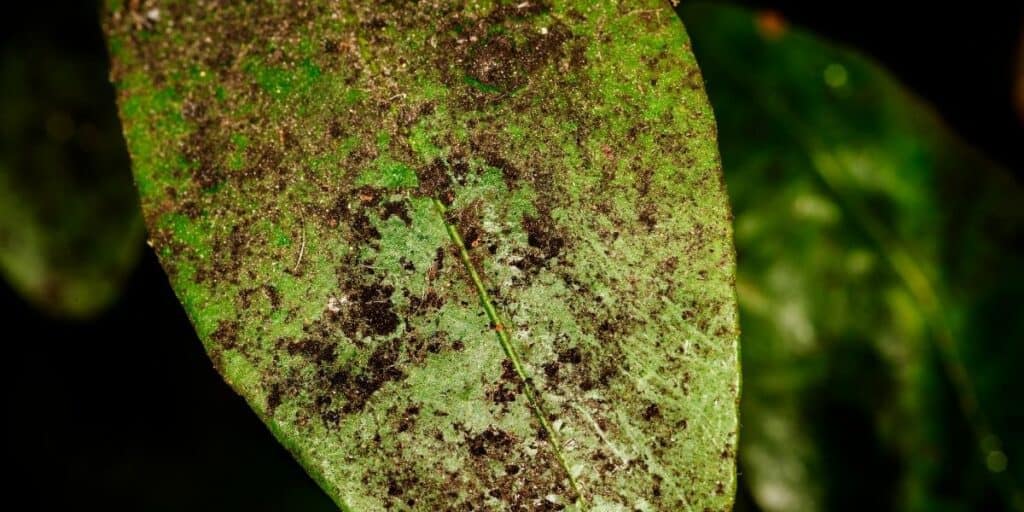
Sooty Mold can be caused by few different kinds of fungi, which show up to feed on honeydew left behind by pests. This means that pests typically introduce Sooty Mold to plants. So, these are what you’ll need to focus on getting rid of.
Fortunately, you can treat sooty mold with fairly little effort. All that you need to do is go to the source: pests. Many of these pesky pests can be killed off with a good, old-fashioned Neem oil, which should also clear up the Sooty Mold.
Sooty Mold generally shows up once pests have gotten a bit out of control. To prevent it, simply ensure that pests aren’t allowed to stick around on your plants. It may be wise to apply some sort of pesticide regularly.
Additionally, keep weeds from growing near your plants. These tend to carry pests that are easy to transfer.
As you can see, all 5 of these plant diseases can be prevented in some manner or other. Prevention is usually your best bet.
Now, the next time you see some suspicious fuzz on one of your plants, you'll know what to do!